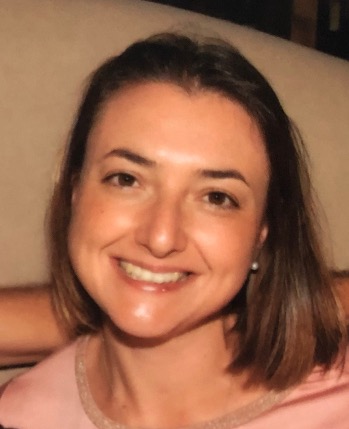Studiare
In questa sezione è possibile reperire le informazioni riguardanti l'organizzazione pratica del corso, lo svolgimento delle attività didattiche, le opportunità formative e i contatti utili durante tutto il percorso di studi, fino al conseguimento del titolo finale.
Calendario accademico
Il calendario accademico riporta le scadenze, gli adempimenti e i periodi rilevanti per la componente studentesca, personale docente e personale dell'Università. Sono inoltre indicate le festività e le chiusure ufficiali dell'Ateneo.
L’anno accademico inizia il 1° ottobre e termina il 30 settembre dell'anno successivo.
Calendario didattico
Il calendario didattico indica i periodi di svolgimento delle attività formative, di sessioni d'esami, di laurea e di chiusura per le festività.
| Periodo | Dal | Al |
|---|---|---|
| 1° SEM Scienze nutraceutiche | 3-ott-2022 | 27-gen-2023 |
| Annuale Scienze nutraceutiche | 3-ott-2022 | 16-giu-2022 |
| 2° SEM Scienze nutraceutiche | 6-mar-2023 | 16-giu-2023 |
| Sessione | Dal | Al |
|---|---|---|
| Sessione invernale d'esame | 30-gen-2023 | 3-mar-2023 |
| Sessione estiva d'esame | 19-giu-2023 | 31-lug-2023 |
| Sessione autunnale d'esame | 4-set-2023 | 29-set-2023 |
Calendario esami
Gli appelli d'esame sono gestiti dalla Unità Operativa Segreteria Corsi di Studio Medicina.
Per consultazione e iscrizione agli appelli d'esame visita il sistema ESSE3.
Per problemi inerenti allo smarrimento della password di accesso ai servizi on-line si prega di rivolgersi al supporto informatico della Scuola o al servizio recupero credenziali
Per dubbi o domande leggi le risposte alle domande più frequenti F.A.Q. Iscrizione Esami
Docenti
 elisa.artegiani@univr.it
elisa.artegiani@univr.it
 chiara.nardon@univr.it
chiara.nardon@univr.it
Piano Didattico
Il piano didattico è l'elenco degli insegnamenti e delle altre attività formative che devono essere sostenute nel corso della propria carriera universitaria.
Selezionare il piano didattico in base all'anno accademico di iscrizione.
1° Anno
| Insegnamenti | Crediti | TAF | SSD |
|---|
2° Anno Attivato nell'A.A. 2023/2024
| Insegnamenti | Crediti | TAF | SSD |
|---|
3° Anno Sarà attivato nell'A.A. 2024/2025
| Insegnamenti | Crediti | TAF | SSD |
|---|
1 insegnamenti a scelta1 insegnamento a scelta| Insegnamenti | Crediti | TAF | SSD |
|---|
| Insegnamenti | Crediti | TAF | SSD |
|---|
| Insegnamenti | Crediti | TAF | SSD |
|---|
1 insegnamenti a scelta1 insegnamento a scelta| Insegnamenti | Crediti | TAF | SSD |
|---|
Legenda | Tipo Attività Formativa (TAF)
TAF (Tipologia Attività Formativa) Tutti gli insegnamenti e le attività sono classificate in diversi tipi di attività formativa, indicati da una lettera.
Statistica medica ed epidemiologia e laboratorio (2022/2023)
Codice insegnamento
4S010589
Crediti
6
Lingua di erogazione
Italiano
Settore Scientifico Disciplinare (SSD)
MED/01 - STATISTICA MEDICA
L'insegnamento è organizzato come segue:
PARTE 2
PARTE 1
Obiettivi di apprendimento
Il corso si propone di fornire allo studente le conoscenze statistiche di base, necessarie per interpretare i dati quantitativi di un insieme di individui, distinguendo tra variabilità individuale e leggi matematiche di carattere generale. Per questo scopo verranno spiegati i principali concetti di statistica descrittiva, calcolo delle probabilità e statistica inferenziale, e di epidemiologia descrittiva, analitica e valutativa. Oltre alla spiegazione dei concetti teorici verranno svolte attività di laboratorio con esercizi di statistica sanitaria ed epidemiologia, utilizzando un foglio elettronico o software statistici di libero accesso. La metodologia statistica-epidemiologica verrà applicata all’ambito sanitario, con particolare riferimento alla nutrizione umana. Al termine del corso lo studente dovrà essere in grado di descrivere in modo appropriato le informazioni raccolte su un collettivo di pazienti, generalizzare le osservazioni effettuate su un campione alla popolazione di origine, e stimare la frequenza delle malattie nelle popolazioni umane e valutare i fattori di rischio associati, soprattutto di ambito nutrizionale.
Modalità di verifica dell’apprendimento L'esame consiste in una verifica scritta del livello di conoscenze acquisite sulla materia anche attraverso esercizi.
Per superare l’esame, gli studenti dovranno dimostrare di aver compreso i concetti di base della statistica e dell’epidemiologia. Gli studenti dovranno anche utilizzare la metodologia statistica ed epidemiologica per risolvere esercizi di ambito nutrizionale, eseguendo correttamente i calcoli e interpretando in modo adeguato i risultati ottenuti.
Prerequisiti e nozioni di base
Sono richieste conoscenze di base di matematica, che peraltro sono già state oggetto del test di ammissione. In particolare lo studente deve avere conoscenze di base di algebra, incluse equazioni e funzioni, e di geometria.
Programma
------------------------
UL: PARTE 1
------------------------
INTRODUZIONE: Scopo della statistica nelle Professioni Sanitarie.
STATISTICA DESCRITTIVA: La misurazione e i differenti tipi di scale di misura - Variabili statistiche e loro rappresentazione mediante distribuzioni di frequenza: tabelle con una o due variabili - Misure di posizione (media, mediana, moda, percentili, media ponderata) - Misure di dispersione (range, deviazione interquartile, devianza, varianza, deviazione standard, coefficiente di variazione). L'analisi di regressione e correlazione.
PROBABILITA’: Definizioni di probabilità: classica, frequentista, soggettivista - Le regole del calcolo della probabilità: regola dell'addizione e regola del prodotto - Probabilità indipendenti e condizionate - Sensibilità, specificità, valore predittivo positivo e negativo di uno strumento diagnostico - Curve ROC - Teorema di Bayes e sue applicazioni alla diagnostica differenziale
------------------------
UL: PARTE 2
------------------------
L'insegnamento è strutturato in lezioni teoriche frontali e in lezioni pratiche svolte utilizzando un foglio elettronico o software statistici di libero accesso. Gli argomenti principali che verranno presentati sono:
PROBABILITA’: Variabili casuali – Distribuzioni di probabilità di una variabile casuale: distribuzione normale e binomiale- Popolazione e campione; cenni di teoria del campionamento - La distribuzione campionaria di uno stimatore (media campionaria).
INFERENZA STATISTICA: Stime puntuali e stime intervallari: intervallo di confidenza - La logica del test d'ipotesi: ipotesi nulla e ipotesi alternativa; errore del I e del II tipo; potenza di un test – Scelta del test statistico.
EPIDEMIOLOGIA: Gli oggetti della ricerca epidemiologica (outcome, parametro di occorrenza, determinante); Misure di frequenza di malattia: prevalenza, incidenza – Misure di associazione: rischio attribuibile, rischio relativo, odds ratio – Disegno dello studio: studio trasversale, di coorte e caso-controllo. Interpretazione causale di un'associazione empirica (modelli causali, errore casuale, bias, confondimento). La modificazione della misura d'effetto
INTRODUZIONE ALL’EPIDEMIOLOGIA NUTRIZIONALE: Cenni ai metodi d’indagine e analisi statistica utilizzati nell’ambito dell’epidemiologia nutrizionale: utilizzo dei Food Frequency Questionnaires; metodi statistici per la determinazione di nutrienti e pattern dietetici
LABORATORIO: esercizi di statistica sanitaria ed epidemiologia utilizzando un foglio elettronico o software statistici di libero accesso.
Bibliografia
Modalità didattiche
------------------------
UL: PARTE 1
------------------------
Il modulo sarà svolto con lezioni frontali ed esercitazioni su problemi di ambito sanitario. E’ obbligatoria la frequenza di almeno il 75% delle lezioni. Gli studenti con certificato di malattia potranno frequentare a distanza tramite la piattaforma zoom.
------------------------
UL: PARTE 2
------------------------
Il modulo sarà svolto con lezioni frontali ed in lezioni pratiche svolte utilizzando un foglio elettronico o software statistici di libero accesso. E’ obbligatoria la frequenza di almeno il 75% delle lezioni. Gli studenti con certificato di malattia potranno frequentare a distanza tramite la piattaforma zoom.
Modalità di verifica dell'apprendimento
------------------------
UL: PARTE 1
------------------------
L’esame è scritto e costituito da circa 20 test a scelta multipla tra 5-8 possibili risposte, ed un problema di Statistica Descrittiva con risposta libera.
Nel caso che fossero adottate norme di emergenza/ protezione sanitaria durante le sessioni dei prossimi mesi, le modalità di esame potranno essere in presenza con distanziamento sociale o a distanza tramite la piattaforma Zoom.
------------------------
UL: PARTE 2
------------------------
L'esame consiste in un test scritto con domande ed esercizi. La valutazione finale è espressa in trentesimi.
Criteri di valutazione
------------------------
UL: PARTE 1
------------------------
Si valuterà non solo l’acquisizione di conoscenze statistiche ma anche la capacità di utilizzarle in modo critico per risolvere problemi sanitari. Verrà attribuito un punto ad ogni risposta esatta, e zero punti alle risposte errate o mancanti.
------------------------
UL: PARTE 2
------------------------
Si valuterà non solo l’acquisizione di conoscenze statistiche ma anche la capacità di utilizzarle in modo critico per risolvere problemi sanitari.
Criteri di composizione del voto finale
Il voto finale sarà la media ponderata del voto ottenuto per le parti 1 e 2 dell’insegnamento, con pesi i crediti delle 2 parti (2 crediti per la parte 1 e 4 crediti per la parte 2).
Lingua dell'esame
------------------------ UL: PARTE 1 ------------------------ italiano ------------------------ UL: PARTE 2 ------------------------ Italiano
Prospettive
Avvisi degli insegnamenti e del corso di studio
Per la comunità studentesca
Se sei già iscritta/o a un corso di studio, puoi consultare tutti gli avvisi relativi al tuo corso di studi nella tua area riservata MyUnivr.
In questo portale potrai visualizzare informazioni, risorse e servizi utili che riguardano la tua carriera universitaria (libretto online, gestione della carriera Esse3, corsi e-learning, email istituzionale, modulistica di segreteria, procedure amministrative, ecc.).
Entra in MyUnivr con le tue credenziali GIA: solo così potrai ricevere notifica di tutti gli avvisi dei tuoi docenti e della tua segreteria via mail e a breve anche tramite l'app Univr.
Orario lezioni
La frequenza in aula delle lezioni non è obbligatoria ma fortemente consigliata; tuttavia i singoli docenti sono liberi di richiedere un minimo di ore di frequenza per l’ammissibilità all’esame di profitto dell’insegnamento di cui sono titolari. In tal caso il controllo della frequenza alle attività didattiche è stabilito secondo modalità preventivamente comunicate agli studenti.
La frequenza alle attività di esercitazione, laboratorio e tirocinio è obbligatoria al 100%.
Poichè l'orario delle lezioni potrebbe subire variazioni, si consiglia di visualizzarlo settimanalmente.
L'orario del 2° semestre è disponibile su MyUniVR: le modifiche al piano settimanale sono segnalate di seguito.
1° ANNO
Da mercoledì 22 maggio 2024 compreso NO Fisiologia umana
Mercoledì 22 maggio 2024 NO Biochimica della Nutrizione
Chimica Organica LABORATORIO: previste anche le due mattine di mercoledì 22 maggio e mercoledì 5 giugno (9:30-13:30)
2° ANNO
Farmacologia: il mercoledì mattina c’è lezione in data 24/04/2024, 22/05/2024 e 05/06/2024
La lezione di martedì 30 aprile viene posticipata alle 15:30 in Ca' Vignal 3 - aula Magna.
Lezioni di recupero:
- giovedì 02/05/2024 ore 14:30 - 16:30 in Ca' Vignal 2 - aula L
- martedì 23/05/2024 ore 8:30 - 12:30 in Ca' Vignal 3 - aula 1.02
- giovedì 30/05/2024 ore 10:30 - 12:30 in Ca' Vignal 3 - aula 1.02
Tecnologie e legislazione farmaceutica e dei prodotti per la salute secondo il prospetto seguente:
| APRILE | Mer | Gio | Ven | Lun | Mar | Mer | Gio | Ven | Lun | Mar | Mer | Gio | Ven | Lun | Mar | Lun | Mar |
| 3 | 4 | 5 | 8 | 9 | 10 | 11 | 12 | 15 | 16 | 17 | 18 | 19 | 22 | 23 | 29 | 30 | |
| 9:30-10:30 | CV3 T.05 | ||||||||||||||||
| 10:30-11:30 | |||||||||||||||||
| 16.30-17.30 | CV3 Magna | CV3 T.05 | CV3 Magna | CV3 T.05 | CV3 Magna | CV3 Magna | CV3 T.05 | CV3 Magna | |||||||||
| 17.30-18.30 |
Maggio secondo indicazioni su MyUniVR con l'aggiunta delle seguenti lezioni:
- lunedì 3 ore 8:30-10:30 e lunedì 13 ore 8:30-11:30 in CV3 aula T.06
- lunedì 20 - 27 ore 8:30-11:30 in CV3 aula T.05
- martedì 7 - 14 - 28 ore 15:30-18:30 in CV3 aula Magna
- mercoledì 8 -15 ore 16:30-18:30 in CV3 aula Magna e mercoledì 28 ore 15:30-18:30 in CV3 aula Magna
- venerdì 10 - 17 - 24 - 31 ore 16:30 - 19:30 in CV3 aula T.05
Giugno: venerdì 7 -14 - 21 -28 ore 16:30 - 19:30 in CV3 aula T.05
Chimica farmaceutica per l'alimentazione CONTROLLO DI QUALITÀ DEI PRODOTTI DIETETICI E ALIMENTARI E LABORATORIO Laboratorio Inizio da lunedì 15 aprile 2024
Chimica farmaceutica per l'alimentazione PREPARAZIONI ESTRATTIVE E LABORATORIO Laboratorio Inizio da giovedì 16 maggio 2024
Area riservata studenti
Recupero degli Obblighi Formativi Aggiuntivi
La verifica del possesso delle conoscenze di base (saperi minimi) necessarie per poter frequentare il corso con profitto avviene, contestualmente alla prova di ammissione, sostenendo un TOLC-B su quesiti di Biologia, Chimica, Fisica, Matematica di base, Inglese. Nel caso in cui nel TOLC-B non vengano raggiunti punteggi uguali e superiori al 40% del punteggio massimo previsto per una qualsiasi delle materie previste, saranno attribuiti i relativi obblighi formativi aggiuntivi (OFA).
Corsi integrativi delle cinque materie saranno organizzati nel primo semestre con frequenza obbligatoria. L’assolvimento dell’obbligo è requisito obbligatorio per l’ammissione agli esami del primo semestre.
Assegnazione degli Obblighi Formativi Aggiuntivi
Gli Obblighi Formativi Aggiuntivi che lo studente dovrà effettivamente sostenere saranno aggiornati sulla sua pagina personale entro novembre 2023
Modalità di Recupero degli Obblighi Formativi Aggiuntivi
MATEMATICA
Materiale di studio: disponibile tramite moodle
Per coloro che non hanno superato il test, sarà effettuato un quarto esame venerdì 28 giugno 2024 ore 10:00 in Lente Didattica - aula 5
FISICA
Materiale di studio su JOVE
Data del test: mercoledì 6 dicembre 2023 ore 11.30 in aula H Ca' Vignal 2 - strada Le Grazie 8
BIOLOGIA
Materiale di studio su JOVE
Data del test: mercoledì 24 gennaio 2024 ore 14.00 in aula H - Ca' Vignal 2
CHIMICA
Materiale di studio su JOVE
Data del test: giovedì 23 novembre 2023 ore 11.00 in aula H - Lente Didattica
Modalità di frequenza
Non vi è un obbligo generalizzato di frequenza alle lezioni, ma è fortemente consigliata; tuttavia i singoli docenti sono liberi di richiedere un minimo di ore di frequenza per l’ammissibilità all’esame di profitto dell’insegnamento di cui sono titolari. In tal caso il controllo della frequenza alle attività didattiche è stabilito secondo modalità preventivamente comunicate agli studenti.
La frequenza alle attività di esercitazione, laboratorio e tirocinio è obbligatoria al 100%.
Competenza linguistica - Lingua Inglese
Per la competenza linguistica, è prevista il livello B1
Per la coorte 2023/2024:
L'insegnamento di lingua inglese sarà erogato in modalità convenzionale.
Il corso (annuale) si tiene il giovedì mattina dalle ore 8.30 alle ore 11.30 nella sede di Ca' Vignal 3 - aula T.05
La verbalizzazione dell'esame può essere richiesta alla Segreteria Didattica del Corso, inviando il certificato rilasciato dal CLA.
Per la coorte 2022/2023:
Il piano didattico del corso di Studio prevede l’acquisizione di 4 CFU di Lingua straniera, che corrispondono a una competenza linguistica di livello B1 informatizzato.
I crediti di lingua straniera si ottengono frequentando uno dei corsi organizzati dal CLA – Centro Linguistico di Ateneo https://cla.univr.it/it/didattica#EsercitazioniLing - consultando l'offerta nel sito per le iscrizioni e l'orario delle lezioni.
La verbalizzazione dell'esame può essere richiesta alla Segreteria Didattica del Corso, inviando il certificato rilasciato dal CLA.
►Gli studenti già in possesso di certificazioni linguistiche ottenute presso enti esterni possono richiedere il certificato di equipollenza al CLA, in modo che l'idoneità linguistica sia registrata e risulti nel libretto elettronico. Per accedere al servizio cliccare il link:
https://cla.univr.it/it/servizi/riconoscimento-delle-certificazioni-linguistiche-esterne
Per informazioni sulla registrazione a libretto, contattare la Segreteria didattica
La prova si svolgerà presso il laboratorio linguistico del centro (aula S.5, piano -1, Polo Zanotto) nei giorni indicati nel calendario delle prove. Le iscrizioni si raccolgono come descritto nella sezione ISCRIZIONI ALLE PROVE. I calendario dei turni verrà pubblicato il giorno successivo alla chiusura delle iscrizioni nelle tabelle dedicate alle varie lingue in fondo alla pagina.
L'accesso al laboratorio verrà gestito dallo staff del CLA.
Prova Finale
Per essere ammessi alla prova finale occorre avere conseguito tutti i crediti nelle attività formative previste dal piano degli studi, compresi quelli relativi all’attività di tirocinio. Alla preparazione della tesi sono assegnati 5 CFU. La prova finale si compone di redazione e dissertazione di un elaborato di tesi. Lo studente per il lavoro di tesi avrà la supervisione di un docente della Scuola di Medicina e Chirurgia o della Scuola di Scienze e Ingegneria detto Relatore, ed eventuali correlatori in possesso almeno della laurea triennale anche se esterni al Corso di Laurea. Scopo della tesi è quello di impegnare lo studente in un lavoro di formalizzazione, progettazione e di ricerca, che contribuisca sostanzialmente al completamento della sua formazione professionale e scientifica. Il contenuto della tesi deve essere inerente a tematiche o discipline strettamente correlate al profilo professionale. Si ricorda che presentare tesi copiate o procurate da altri costituisce reato. (Legge 475/1925 tutt’oggi in vigore).
Valutazione della tesi
La valutazione della tesi sarà basata sui seguenti criteri: livello di approfondimento del lavoro svolto; contributo critico del laureando; accuratezza della metodologia adottata per lo sviluppo della tematica.
Punteggio finale
Il punteggio finale di Laurea è espresso in cento decimi ed è formato:
• Media ponderata rapportata a 110 dei voti conseguiti negli esami curriculari (arrotondata per eccesso o per difetto al numero intero più vicino);
• Discussione della Tesi: da 0 fino ad un massimo di 5 punti per tesi compilativa; da 0 fino ad un massimo di 10 punti per tesi sperimentale.
La commissione di Laurea potrà attribuire ulteriori punti anche in base a:
• Presenza di eventuali lodi ottenute negli esami sostenuti fino ad 1 punto aggiuntivo;
• Partecipazione ai programmi Erasmus fino a 2 punti aggiuntivi;
• Laurea entro i termini della durata normale del corso 2 punti aggiuntivi.
La lode può venire attribuita con parere unanime della Commissione ai candidati che conseguano un punteggio finale maggiore o uguale a centodieci. È prevista la possibilità per lo studente di redigere l'elaborato in lingua inglese.
Competenze informatiche
L’acquisizione di CFU F per abilità informatiche può avvenire con le seguenti modalità:
- Corso in autoapprendimento via moodle organizzato da Direzione sistemi informativi e tecnologici (UniVR), con test informatizzato a risposta multipla.
Argomenti del test:
1 - Concetti teorici di base
2 - Uso del Computer e gestione dei file
3 - Elaborazione e presentazione testi (Office di Microsoft , LibreOffice, Word -PowerPoint etc...)
4 - Foglio elettronico (Office di Microsoft , LibreOffice)
5 - Internet (protocolli, browser, posta elettronica ...)
6 - Accessibilità dei documenti
7 - Firma digitale
I test si svolgono solo in presenza in Aula Win S1 - Polo Zanotto. Per sostenere la prova è necessario che le credenziali GIA di Ateneo siano funzionanti. Non è possibile utilizzare lo SPID.
Modalità di svolgimento: Test a risposta multipla, 30 domande 40 minuti di tempo per la prova. La prova viene superata rispondendo in modo corretto ad almeno 24 domande su 30. Non c'è voto, ma solo "Idoneo" - "Non idoneo".
Preparazione: trattandosi di un corso in auto-apprendimento non ci sono lezioni frontali, per la preparazione si consiglia di consultare:
- un manuale per la preparazione agli esami ECDL
- il materiale, riguardante i fogli elettronici e l'elaborazione dei testi, pubblicato sul sito Microsoft all'indirizzo web: http://office.microsoft.com/en-us/support/?av=zxl alla voce top solutions -> Office training e https://support.office.com/it-it. Per LibreOffice consultare il sito ufficiale: http://www.libreoffice.org
Sono inoltre disponibili dei test di verifica sui quali esercitarsi.
Per maggiori informazioni contattare la Segreteria Didattica.
- Frequenza di corsi attivati da scuole e centri accreditati dall’AICA (Associazione Italiana per l’Informatica e il Calcolo Automatico) o riconosciuti da Provincia, Regione, ecc.
Verranno riconosciuti 3 CFU F di competenza informatica, indipendentemente dal tipo di certificazione (ECDL base, ECDL standard, ECDL full, ICDL, ICDL full...), purché il richiedente abbia conseguito almeno 4 moduli stile ECDL.
Validità: 5 anni dalla data del rilascio del certificato.
Un’apposita Commissione valuterà i documenti prodotti dallo studente.
Compilazione piani di studio - attività a scelta
Le attività a scelta dello studente (12 CFU, ambito D) comprendono insegnamenti impartiti presso l’Università di Verona.
Per la coorte 2022/2023, la compilazione del piano didattico potrà avvenire dal 25/09/2023 al 30/06/2024.
ELENCO ATTIVITÀ AL 2° ANNO A.A. 2023/2024:
Biochimica e biochimica analitica 12 CFU – L BIOTECNOLOGIE (S21)
Biologia molecolare 6 CFU – L BIOINFORMATICA (S23)
Biologia molecolare 9 CFU – L BIOTECNOLOGIE (S21)
Biochimica vegetale 6 CFU – L BIOTECNOLOGIE (S21)
Elementi di Chimica fisica 6 CFU – L BIOTECNOLOGIE (S21)
Laboratorio di biologia molecolare 6 CFU – L BIOINFORMATICA (S23)
Organismi modello di interesse biotecnologico 6 CFU – L BIOTECNOLOGIE (S21)
Tecniche analitiche di chimica clinica 6 CFU – L BIOTECNOLOGIE (S21)
ELENCO ATTIVITÀ AL 2° ANNO A.A. 2024/2025:
Oltre alle attività precedentemente citate, potranno essere selezionate quelle già previste nei gruppi di scelta al 3° anno, in modo da consentire agli studenti di sostenere in TAF D quelli non scelti precedentemente.
Potranno essere aggiunte, inoltre, nel corso dell’anno eventuali seminari/attività varie/convegni previo accreditamento.
Il riconoscimento di tali CFU dovrà essere valutato dalla Commissione Didattica sulla base della coerenza delle attività scelte rispetto al percorso formativo del corso di studio. I crediti a scelta non sono vincolati, ma, in sede di valutazione finale, si tiene conto della coerenza e dell’adeguatezza delle scelte effettuate dallo studente nel quadro formativo complessivo. Pertanto è raccomandato di non scegliere attività che possano in gran parte risultare simili ad insegnamenti già presenti nel piano didattico del CL in SNSA, bensì di scegliere attività che apportino un reale arricchimento del percorso formativo.
COMPETENZE TRASVERSALI - TALC
Sono percorsi formativi finalizzati all’acquisizione di competenze trasversali utili sia dal punto di vista personale e lavorativo sia di civic engagement, promossi dal Teaching and Learning Center dell’Ateneo: su questa pagina web sono pubblicate tutte le informazioni utili.
Appelli d'esame
Per gli insegnamenti di Competenza linguistica - Inglese B1 e Abilità Informatiche, consultare le pagine dedicate (menu a sinistra).
Gli appelli della sessione estiva e autunnale sono in aggiornamento.
Documenti
| Titolo | Info File |
|---|---|
|
|
pdf, it, 273 KB, 23/04/24 |
|
|
pdf, it, 277 KB, 23/04/24 |
Tirocinio formativo
Il percorso formativo prevede una attività di tirocinio-stage da effettuare presso strutture pubbliche o private convenzionate con l'Università degli Studi di Verona.
Il conseguimento dei crediti relativi all’attività di tirocinio è obbligatorio per essere ammessi alla prova finale.
Le attività di stage/tirocinio professionale devono essere preliminarmente concordate, e successivamente certificate, da parte del docente responsabile o tutore, unitamente alla valutazione degli obiettivi didattici prefissati e all’acquisizione dei relativi crediti.
Per eventuali infortuni:
dal 1° marzo 2024 la documentazione e la certificazione medica degli infortuni di studenti dovrà essere trasmessa esclusivamente mediante l’utilizzo del questionario online su piattaforma Elix form accessibile dal seguente link:
https://www.univr.it/it/organizzazione/tecnica-e-logistica/logistica/servizi-logistici
pertanto la modalità cartacea sarà dismessa e non verranno prese in considerazione altre modalità di trasmissione.
Il questionario deve essere compilato a seguito di infortunio per la comunicazione obbligatoria al datore di lavoro.
La segnalazione dell’infortunio deve essere fatta anche per lesioni di lieve entità o prognosi da uno a tre giorni.


 +39 045 802 7949
+39 045 802 7949









